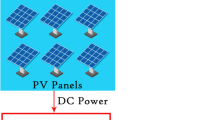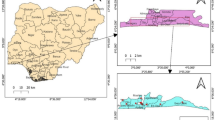Abstract
The paper proposes an approach to solving the problem of optimal management of a technical system or process (control object) in the form of determining a set of values of control parameters on a set time horizon (control horizon) optimizing the target function of the control object on a given horizon. To solve the problem, a method of identifying the model of the control object using an artificial neural network has been developed. For each specified time slice of the required control horizon, the model calculates the predicted values of the object state parameter on the basis of the values of the object control parameter generated for each time slice of the tuples. For each time slice, the tuples of the target function of the object are calculated according to the generated tuples of the control parameters and the forecast calculated by the model on their basis. The solution to the problem of optimal control is the selection in the process of optimization of one control parameter value from the generated tuples for each time slice providing an optimum (maximum or minimum) sum of the values of the target function for all specified time slices of the required control horizon. Optimization of the target function of the object is carried out using a modified Thompson sampling algorithm used in the well-known multiarmed bandit problem. As an example, the problem of building a set of optimal prices for goods, the implementation of which is carried out in the free market, maximizing the profit of the seller for a given management horizon, is solved.




Similar content being viewed by others
REFERENCES
L. S. Chernyshev, “Method and a system for predicting time series values using an artificial neural network,” RF Patent No. 2744041 S1 (2021).
L. S. Chernyshev, “Method and control system for engineering system or process control using an artificial neural network optimizing a goal function,” Invention Appl. 2022123701 (2022).
L. S. Chernyshev, “Forecasting the values of a time series using neural network in solving the problem of dynamic pricing,” in 24th Int. Sci.-Tech. Conf. Neiroinformatics-2022, Dolgoprudny, Moscow oblast, 2022.
L. S. Chernyshev, “Method and optimal control system for engineering system or process control using the Tompson sampling,” Invention Appl. 2023102321 (2022).
N. D. Egupov, Methods of Robust, Neuro-Fuzzy, and Adaptive Control: Textbook, Ed. by N. D. Egupov, 2nd ed. (Mosk. Gos. Tekh. Univ. im. N.E. Baumana, Moscow, 2002).
K. J. Ferreira, D. Simchi-Levi, and H. Wang, “Online Network Revenue Management Using Thompson Sampling,” Oper. Res. (2017). https://doi.org/10.2139/ssrn.2588730
A. I. Galushkin, Theory of Neural Networks (IPRZhR, Moscow, 2000).
S. Haykin, Neural Networks: A Comprehensive Foundation (Prentice Hall, 1998).
I. M. Makarov, V. M. Lokhin, S. V. Man’ko, and M. P. Romanov, Artificial Intelligence and Smart Control Systems (Nauka, Moscow, 2006).
K. A. Pupkov, “Problems of theory and practice of intelligent systems,” in Mechanical, Instrumental, and Power Engineering, Ed. by A. N. Tikhonov, V. A. Sadovnichii (Izd-vo Mosk. Univ., Moscow, 1994), pp. 263–266.
D. J. Russo, B. Van Roy, A. Kazerouni, I. Osband, and Zh. Wen, “A tutorial on thompson sampling,” Found. Trends Mach. Learn. 11 (1), 1–98 (2018). https://doi.org/10.1561/2200000070
V. A. Terekhov, D. V. Efimov, I. Yu. Tyukin, and V. N. Antonov, Neural-Network Control Systems (S.-Peterb. Univ., St. Petersburg, 1999).
A. V. Timofeev and R. M. Yusupov, “Intelligent control systems,” Izv. Ross. Akad. Nauk. Tekh. Kibern., No. 5, 209–224 (1994).
W. R. Thompson, “On the theory of apportionment,” Am. J. Math. 57 (2), 450–456 (1935). https://doi.org/10.2307/2371219
Funding
This work was carried out within the framework of the grant agreement from the Innovation Promotion Foundation 122GS1IIS12-D7/76682 dated June 9, 2022.
Author information
Authors and Affiliations
Corresponding author
Ethics declarations
The author declares that he has no conflicts of interest.
Additional information
L.S. Chernyshev. Born in Moscow in 1972. In 1996, he graduated from the Faculty of Theoretical and Experimental Physics of MEPhI.
From 1996 to 2006, postgraduate student, software engineer, Head of the Laboratory of the State Oceanographic Institute, Moscow. In 2001, he defended his dissertation for the degree of Candidate of physical and mathematical sciences titled “Modeling and Analysis of Variability of Hydrological-Hydrochemical Characteristics of Water Masses of the North Atlantic.” Since 2006, director at commercial companies. Since 2022, General Director of the Matsoft scientific company, Moscow. Author of 13 published works (including in co-authorship), including one patent for an invention.
Rights and permissions
About this article
Cite this article
Chernyshev, L.S. A Method of Optimal Control of a Technical System or Process Using the Neural Network Model and the Thompson Sampling Algorithm. Pattern Recognit. Image Anal. 33, 247–254 (2023). https://doi.org/10.1134/S1054661823030069
Received:
Revised:
Accepted:
Published:
Issue Date:
DOI: https://doi.org/10.1134/S1054661823030069




